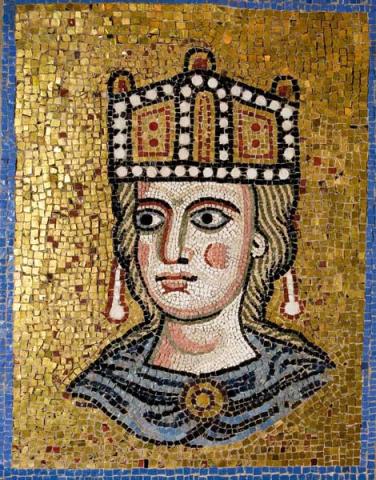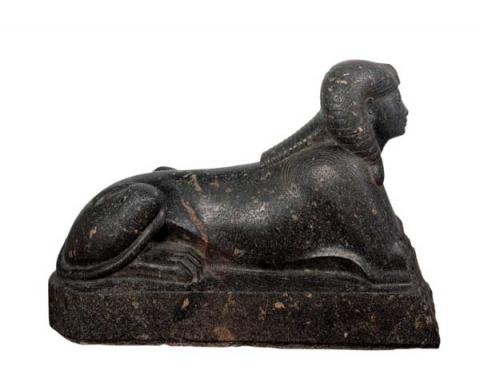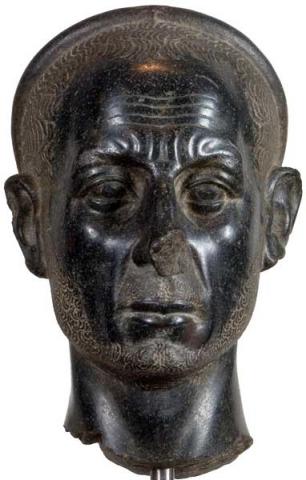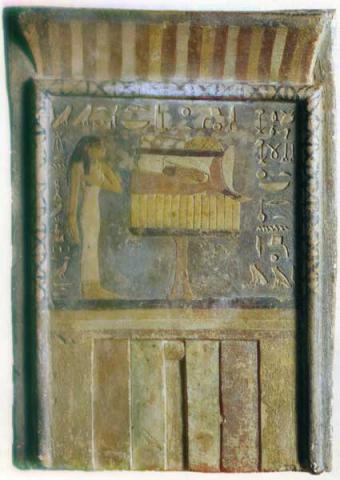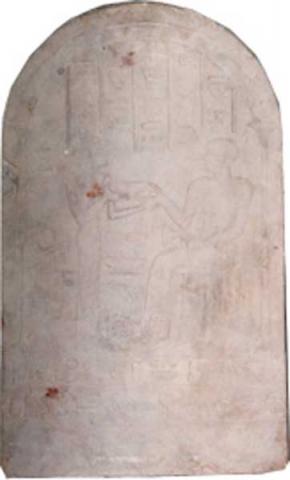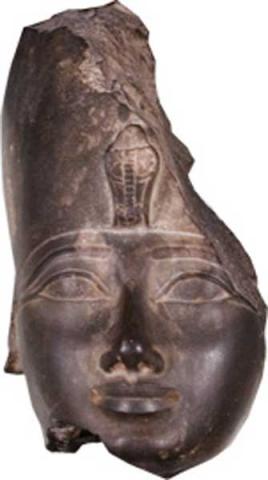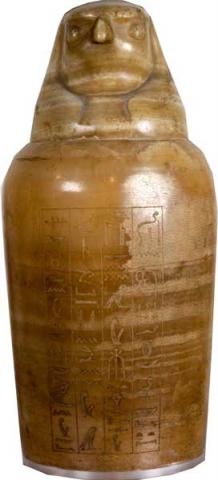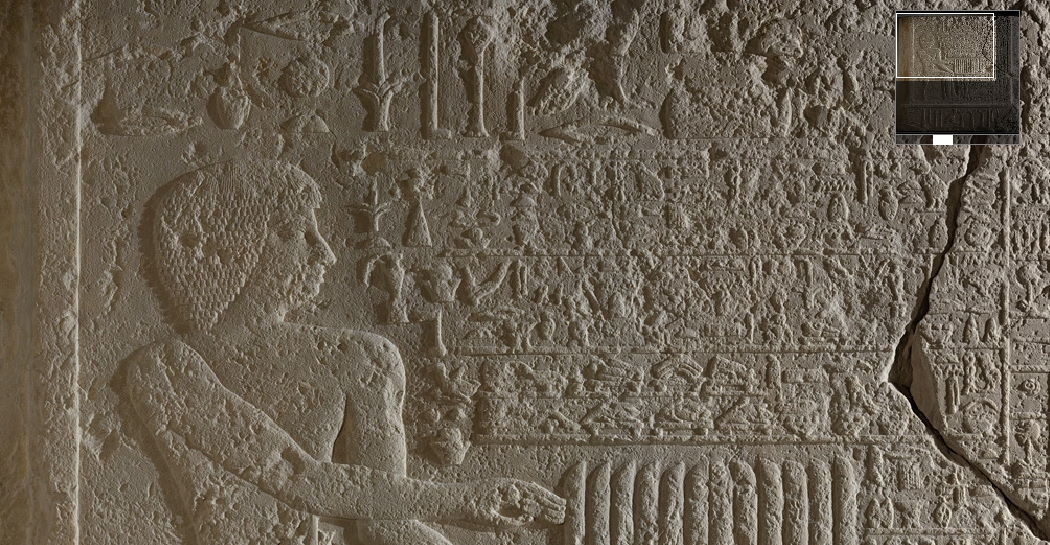Room 1 - Egyptian Art
FUNERARY RELIEFS
Nearly all the reliefs in the Barracco Museum’s collection belong to the funerary sphere.
They come from a type of tomb, the mastaba (from the Arabic word for bench), which was especially characteristic of Old Kingdom necropolises.
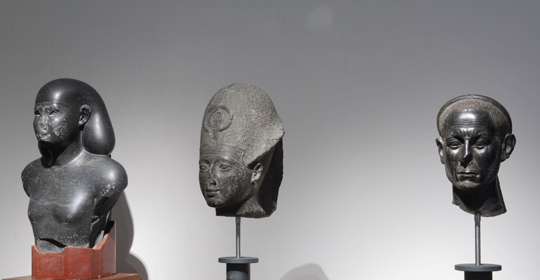
The tomb had two main parts: an underground chamber, accessible from a deep shaft, where the sarcophagus and the grave goods were placed; and an above-ground structure (a sort of truncated pyramid) that could include several rooms.
One or more “false doors” represented the connection between the world of the living and that of the dead, the symbolic boundary that the dead person’s spirit (Ka) could magically cross to gather up the offerings.
A funerary stele with the deceased’s image was also placed in the mastaba. The dead person was often depicted seated at the table on which were laid out the offerings that were to accompany him or her on the journey to the afterlife.
An inscription cited the deceased’s name and titles, together with a ritual phrase with which the sovereign himself mediated between the relatives and Osiris, lord of the dead. In this way, the deceased’s name was “made alive,” and his or her image was a true substitute capable of attending the ceremonies in his or her honor.
SCULPTURE
In sculpture in the round, the main subject is the human figure, depicted in a few standard types: the standing/walking figure, the sitting or kneeling figure, and the one shown in the characteristic position of the scribe. While the images of pharaohs and deities are strongly marked by idealization and abstraction, in private sculptures facial features are rendered with a greater aim at portrayal.
Egyptian statuary follows strict compositional rules and is always connected with architecture, since the image replaces the presence of the real person in the building, whether temple or tomb.
The statues in the Barracco collection fall in different categories, but they all testify clearly to their function as “substitutes” in the performance of domestic activities (the roles of the ushabtis and the statuettes of servants) or participation in ceremonies in their honor (statues of the deceased or the sovereign); or as stand-ins for the god, the sovereign or a simple offerer.


























